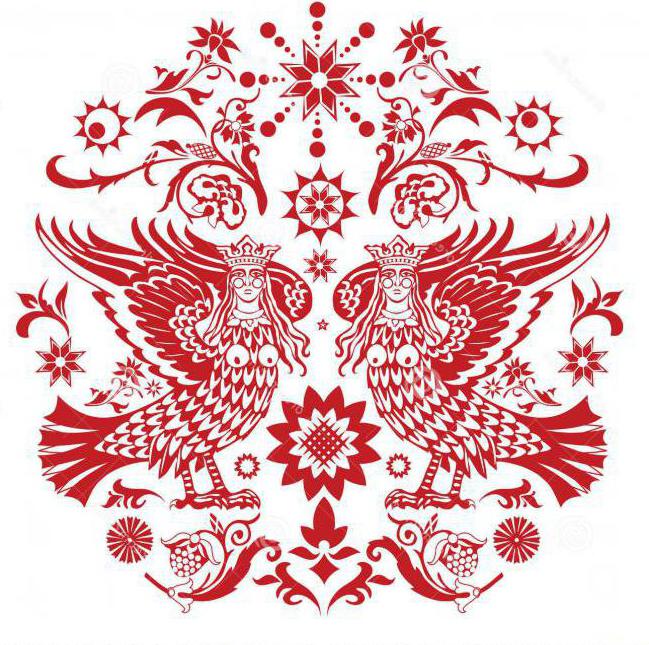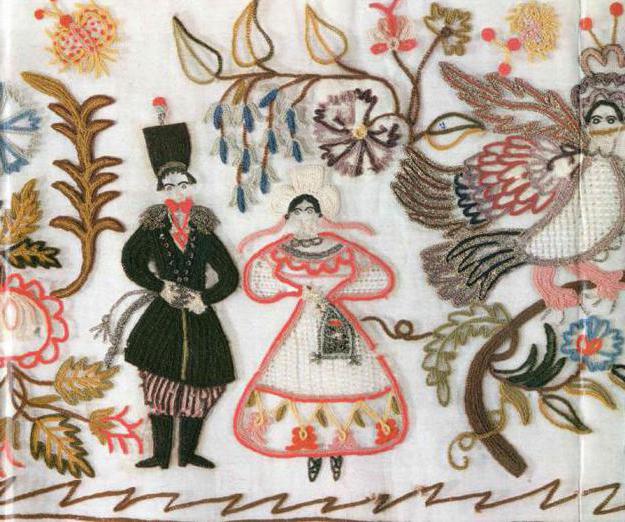The ornament is back in fashion. But have you ever thought that putting on a beautiful thing with a geometric, floral or anthropomorphic repeating pattern, you want to tell something to others?
What is an ornament
Even before writing, people knew how to code information. They did this with the help of ornament.
What is an ornament?
The word comes from the Latin ornemantum - "decoration". An ornament is a pattern based on the alternation of its constituent elements.
This pattern was applied to a variety of objects. It could be:
- household utensils, for example, dishes;
- weapons;
- clothes;
- textile products (towels, blankets, etc.);
- architectural structures (inside and out).
Primitive peoples applied an ornament to their body (a prototype of modern tattooing).
But the purpose of the ornament was not to decorate objects at all. He was assigned the role of protector from evil forces and spirits.
Classification
Four main types of ornament are distinguished:
- Geometric , consisting of figures - circles, spirals, dots, lines, rhombuses, etc. It is the most ancient type of ornament and originated in the Paleolithic era.
- Vegetable , which consists of repeating images of branches, leaves, fruits, or whole plants.
- In zoomorphic images of animals alternate (mythical or real).
- Anthropomorphic ornament consists of forms depicting people or half-humans.
Sometimes a teratological ornament is also distinguished, that is, an image of cultural objects, celestial bodies. But this article is devoted exclusively to anthropomorphic ornament. So, we proceed to describe it.
Anthropomorphic ornament: features
We have already found out that this type of ornament implies the image of a person or human-like creatures. However, its meaning may vary depending on what exactly and where it is depicted.
Anthropomorphic ornament is divided into 2 types:
- archaic, reflecting ancient mythological representations;
- household, or genre.
The mystery of the Shigir idol
The most striking and mysterious example of an anthropomorphic archaic ornament is the pattern on the body of the Shigir idol.
This oldest wooden idol on Earth still hides a lot of secrets that scientists are solving.
It is quite well preserved for its age (and it is about 9,000 years old). Peat acted as a "preservative". The deity was removed from the peat bog in 1890, when gold miners found ancient bronze and bone objects in the swamp instead of the metal they were looking for and reported this to archaeologists.
Today the idol is kept in the Sverdlovsk Museum of Local Lore.
It was made in the Mesolithic era, about 8680 years ago, from a single trunk of larch.
Origin version
The body of the deity is covered on all sides with a carved geometric ornament. In addition to it, there are images of faces. They also represent something like an anthropomorphic ornament: seven figures are located along the entire length of the front of the body.
The application of the ornament always symbolizes something, therefore, scientists began to unravel the meaning of the geometric and anthropomorphic ornament on the body of the idol.
According to one version, it depicts a non-anthropomorphic ornament - it is a lunar calendar. Seven faces - seven days of the moon phase, which formed the basis of the ancient Sumerian calendar. And the deity is the personification of the moon.
According to another version, Shigirsky idol is the goddess of death of Mara. The word "Mara" was found at once in several places of the deity, and on the left cheek the inscription "god of the afterlife" was read.
Pottery ornament
A striking example of a household ornament is a pattern on dishes.
As a result of numerous studies of anthropomorphic ornaments on clay dishes, scientists found that, for example, an clay vessel was divided by primitive farmers and pastoralists into three parts, or zones, vertically:
- sky;
- land;
- underwater world.
The ornament was most often located in two tiers, which symbolized the relationship of "ours," the human world with either heaven or a dungeon.
Many early vessels contain images of "processions" of people, animals or anthropomorphic creatures in a single direction.
For example, the inside of the flat dishes of the masters of Samarra culture is occupied by images of anthropomorphic creatures, birds, deer, fish and scorpions surrounded by a stream of water.
As can be seen from the photo, the anthropomorphic ornament on the dishes with images of the "procession" can display ritual dances and round dances.
Archaic anthropomorphic ornament of the Slavs
Archaic-type plots with anthropomorphic characters are named so because they retained representations of the distant past, which were embodied in a conventional form, without a clear image.
The archaic anthropomorphic ornament of the Slavs was presented in such compositions:
- Pava . Plots with anthropomorphic creatures and pavas were often found in embroidery in various compositions. A similar anthropomorphic ornament in the strip was often present on towels and towels.
- Snakes and frogs. Serpentine ornaments were often intertwined with an anthropomorphic figure and often swans on Solvychegod headdresses.
- On the embroidery of the inhabitants of the North, in particular, Kargopol, there were images of mermaids. They looked like their local peasant fishermen represented.
- Birds with the face of the virgin Sirina - decorated the doors of lockers, chests, spinning wheels, hats, towels. The heroines of ancient legends smoothly migrated from oral folk art. A popular example was the popular prints of the 17-18 centuries.
- In archaic plots, images of people similar to idols are also found . Sometimes they are framed by birds, sockets or rhombuses, or other anthropomorphic creatures are included in the composition.
- Female figure with riders - a common composition in the Russian north. Such images are more like a drawing than an ornament. A woman often holds horses on it, and riders seem to bow before the power of a deity. The head of both the woman and the riders is depicted in the form of a rhombus, and they can only be recognized by the clothes and hair, to which special attention was paid, they are depicted in the form of rays.
- In the Tver, Novgorod, Pskov, Petersburg, Olonets provinces of frequencies there are motifs of embroidery with a woman or a tree (moreover, they are interchangeable).
- A single female figure in a bell-shaped robe with a bird in his hands is found in embroideries in many regions - from Pskov to Arkhangelsk province. There are also images with mirror image or from several figures.
- The male figures in the ornament are most often the riders , however, they not only serve as a frame for the central female figure, but can also be presented separately.
- In addition to riders there are also male figures without horses . For example, in works from the Olonets and St. Petersburg provinces there are images of male figures with branches in their hands and in hats in the form of a conical cap and a low hat.

Household ornament on the products of the Slavs
In everyday subjects, anthropomorphic ornament began to be used in the 17-18 centuries. Such motifs adorned valances and towels, sometimes clothes and hats. What stories were presented on them:
- Images of everyday life of different social strata of the population.
- Court life - a festival or a masquerade ball with a detailed image of the characters (violinists, flutists, dancing couples, masked guests), as well as the strollers and sailing ships in which the guests arrived. Similar images were characteristic of St. Petersburg.
- Plots related to the estate life developed against the backdrop of park landscapes and beautiful architectural structures.
- One of the most popular stories is the wedding. Such an ornament was decorated with images of two figures, male and female, holding hands, as well as a wedding procession with a building in the center, where the young “marry”. Such images were found in gaps intended for bedding the newlyweds.
- Household plots on towels were diverse, but the central figure was always a man: a young lady, a soldier, a lady with an umbrella, etc. A dance or dance was a favorite motive.

An ornament depicting people does not have as many secret meanings as, for example, geometric. But this does not make him any less interesting. We hope you are convinced of this.